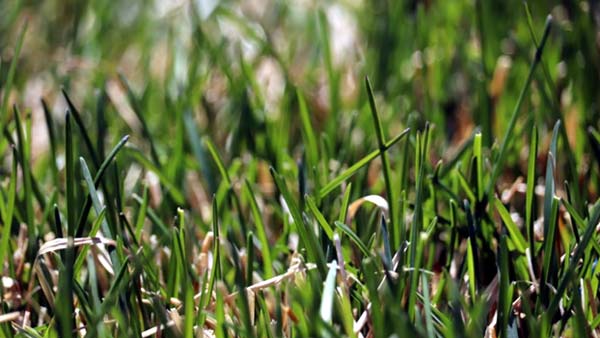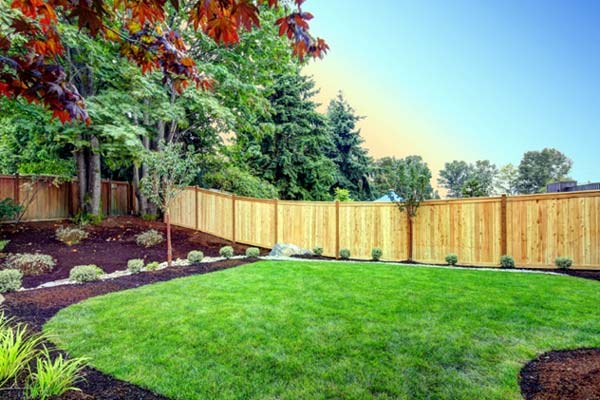Most homeowners want to give their property the best lawn on the block — and while lawn care is the most significant factor in making a lawn stand out, it remains important that the exact right grass is growing in the exact right environment. Because different turfgrasses were created for different temperatures, soil types, humidity, and light levels, not all grass will work on all properties. So what is the best turfgrass for your property?

Maybe you’re thinking about selling your home this summer? If so, you’ll want your lawn looking its best. Here are a few guidelines for choosing the best turfgrass for your property, so you can be one step closer to having the best lawn in the neighborhood.
Types of Turfgrass
Typically, turfgrass is divided into two main categories:
- warm-season grass
- cool-season grass
As you might expect, warm-season grasses flourish in regions with hotter climates; this is because these grasses grow most efficiently in soil that is between 70 and 90 degrees Fahrenheit and air that is between 80 to 95 degrees Fahrenheit.
Conversely, cool-season grasses prefer colder environments and resultingly have their growth periods when the soil is between 50 and 65 degrees Fahrenheit while the daytime air temp is between 60 and 75 degrees Fahrenheit. As you might expect, warm-season grasses are found in the Deep South and the Southwest, and cool-season grasses are found throughout the North.
A Note About Kentucky
Kentucky has always been somewhere in the middle of things — not quite the South, but definitely not the North. But then it’s also not quite the Midwest or an Eastern state, either.
Kentucky certainly enjoys true seasons, unlike the Deep South, but it also endures hot, muggy summers, too. Appropriately, Kentucky exists in what grass experts call the “Transition Zone,” meaning that both cool-season and warm-season grasses grow reasonably well (or equally poorly), and there is no clear grass that is ideal for the area. Thus, while it might seem like Kentucky bluegrass is made for Kentucky’s climate, the truth is that blends of this cool-season grass and a warmer variety like Bermudagrass tend to fare much better in Kentucky’s heat. Then again, you might prefer a warm-season dominant blend, depending on the size and characteristics of your lawn.
Best Turfgrass for Kentucky’s Soil
Another factor to consider when choosing a grass type is soil. Kentucky is well-known for having superior soils; that’s why the state has been so successful at agriculture since the Colonial days. While it’s a good idea to have your soil tested for its clay content and pH level, it’s likely that your soil falls under one of the following three categories:
- Crider soil. A blend of brown and red loam on top of red clay loam; well-draining and nutrient-rich; the most abundant soil in the state.
- Maury soil. Crumbly, silty topsoil over a layer of clay; deep and well-draining; often found in woodland areas.
- Baxter soil. Fine-textured, silty and well-draining; often found in the western corner of the state.
Knowing the type of soil in your yard will help you determine what type of grass will grow best, so it’s a good idea to search the web for “professional lawn care service near me” to help you identify your soil’s characteristics. For instance, soils with a higher clay content won’t drain as efficiently, requiring a grass blend that tolerates cooler soil temperatures. Conversely, a sandier soil will drain faster than average, allowing the soil to heat up. Keep these factors in mind while you are considering your turfgrass options.
Wide Spaces vs. Small Plots

If you don’t have much lawn space to speak of, you want a turfgrass that isn’t invasive, which is to say it won’t spread to areas of your yard where you don’t want the grass to grow. Additionally, you probably want a low-maintenance option, so you don’t have to pull out the mower every couple days. Your best options for small plots are Zoysia and buffalo grasses.
On the other hand, if you are hoping to create a massive lawn — on the scale of a formal French garden or a golf course — you probably don’t mind putting in the time, money and effort to create a masterpiece. In this case, Kentucky bluegrass is ideal because it is a rather durable and attractive grass.
Full Sun vs. Full Shade
Just as you wouldn’t put an orchid in full summer sun and expect magnificent growth, not all grasses thrive under identical lighting conditions. You need to consider whether your prospective lawn is in the full sun, the full shade or a partial amount of both. In Kentucky summers, full sun can get quite hot, so you might need a high blend of warm-season seed to ensure your lawn withstands the warm season.
While most grasses will thrive in Kentucky, you should want to plant the best turfgrass for your land specifically. The truth is it’s always good to get an expert opinion when making a long-term choice for your property, and the grass seed you spread across your lawn could affect the look and function of your landscaping for years to come.



